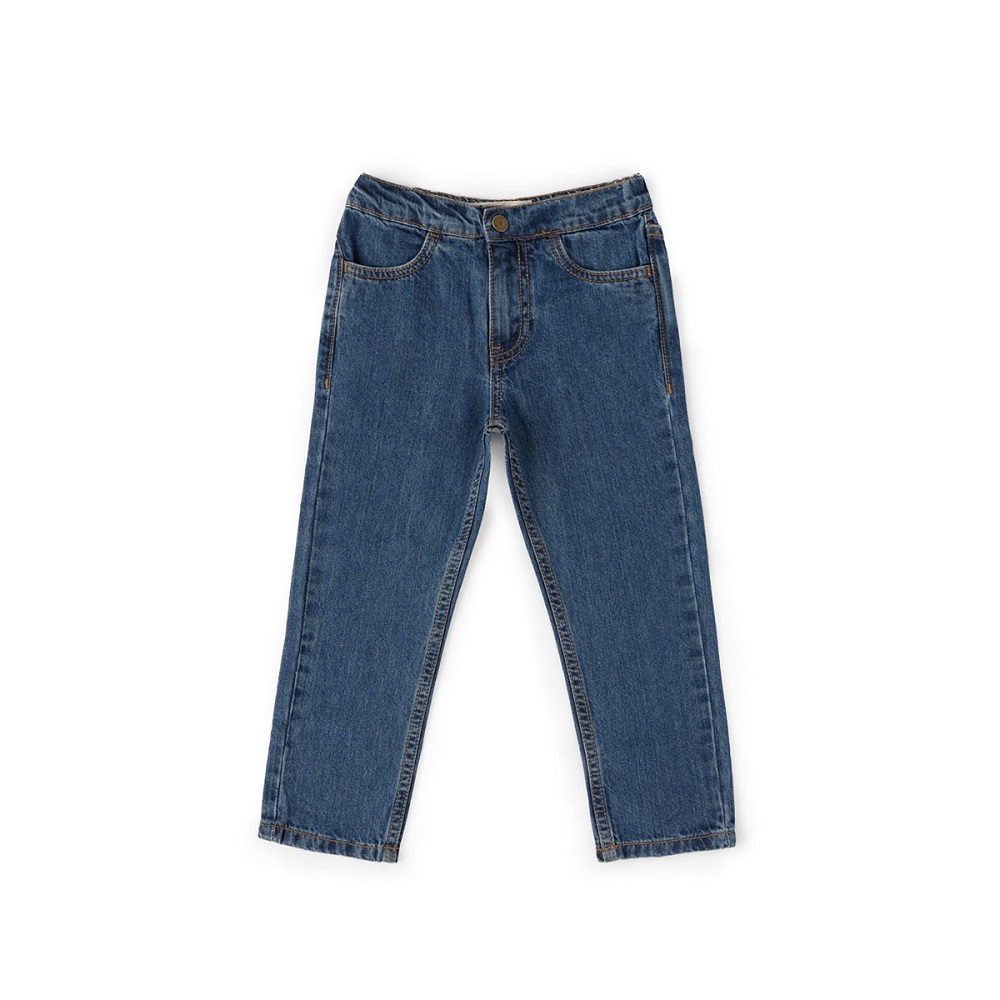How to tailor jeans waist? Tailoring the waist of your jeans is a great way to achieve a better fit and enhance your comfort while wearing them. Whether you’ve lost weight, have a body shape that differs from standard sizes, or simply want to modify the fit to your liking, it’s important to know how to tailor the waist properly. In this comprehensive guide, we will explore the step-by-step process of tailoring jeans waist, including measurements, marking alterations, sewing adjustments, and finishing touches. Let’s dive into the world of garment alterations and unlock the secrets to achieving a perfect fit for your jeans.

Assess and Measure:
Before starting the tailoring process, assess the fit of your bleach jeans and determine the necessary alterations. Consider the following steps:
- Try on the jeans: Wear the jeans and pay attention to the fit around the waist. Identify areas that need adjustment, such as a loose or tight waistband, excess fabric, or improper positioning.
- Measure your waist: Use a measuring tape to measure your waist circumference at your desired position for the jeans’ waistband. This will serve as a reference for alterations.
Mark Alterations:
After measuring and assessing the fit, mark the areas that require alterations. Consider the following techniques:
- Pinning: Use straight pins to temporarily secure excess fabric at the waistband, creating a more snug or tighter fit. For a looser fit, use pins to create gathers or tucks in the fabric.
- Chalk or fabric marker: Mark the areas that require modification, such as where the waistband needs to be taken in or let out. Use chalk or a fabric marker to make clear and visible markings.
Sewing Adjustments:
Once alterations are marked, it’s time to make the necessary adjustments to the waistband. Consider the following steps:
- Remove the waistband: Carefully remove the stitches on the inside of the waistband where the desired alterations will be made. Use a seam ripper or small scissors for this process.
- Take in the waistband: If the waistband needs to be taken in, sew a new seam along the marked line, removing the excess fabric. Sew with a matching thread color and use a straight stitch or a suitable stretch stitch for denim.
- Let out the waistband: If the waistband needs to be let out, create an extension using extra fabric or a matching piece of denim. Sew it onto the marked line, ensuring it blends seamlessly with the original waistband.

Finishing Touches:
After implementing the sewing adjustments, it’s time to finish the tailoring process. Consider the following final steps:
- Trim excess fabric: Cut away any excess fabric from the alterations, ensuring the edges are neat and tidy. Leave a small seam allowance for additional adjustments if needed in the future.
- Reattach the waistband: Once alterations are complete, carefully reattach the waistband to the jeans. Match the original stitching style and use a strong thread to ensure longevity and durability.
- Press and finish: Use a steam iron to press the altered waistband, creating a crisp and polished appearance. Examine the alterations, making any final tweaks or adjustments to guarantee a comfortable and well-fitting waistband.
How to clean and store jeans
Jeans are a versatile and durable wardrobe staple. To maintain their quality and appearance, it’s important to clean and store skinny jeans properly. Proper care ensures their longevity and helps retain their original color and fit.

Cleaning Jeans:
Cleaning jeans properly is essential for preserving their color, fabric, and shape. Consider the following cleaning methods and techniques:
- Machine wash in cold water: Turn your jeans inside out to protect the color and fabric. Use a gentle cycle and cold water to minimize color fading and shrinkage. Avoid hot water, as it can cause jeans to lose their shape.
- Minimal use of detergent: Use a mild detergent specifically designed for dark colors or denim. Follow the detergent manufacturer’s instructions and use the recommended amount. Excessive detergent can leave residue and affect the jeans’ appearance.
- Spot cleaning: For smaller stains, gently spot clean with a damp cloth and a small amount of laundry detergent. Rub the stained area in a circular motion to lift the stain, and then blot with a clean cloth to remove excess moisture.
- Stain removal: For tougher stains, pre-treat them before washing. Apply a stain remover or a mixture of water and detergent directly to the stain. Gently rub the fabric together, focusing on the stained area. Rinse thoroughly before laundering.
Drying Jeans:
Proper drying techniques help prevent shrinkage and maintain the fit and shape of jeans. Consider the following tips:
- Air drying: The best method to dry jeans is to allow them to air dry naturally. Hang them up or lay them flat in a well-ventilated area away from direct sunlight or heat sources. This prevents excessive heat and heat-related damage.
- Smooth out wrinkles: Smooth out any wrinkles or creases by gently pulling and stretching the fabric while jeans are still damp. This helps them retain their original shape as they dry.
- Avoid machine drying: Avoid machine drying fleece jean, as it can cause shrinkage and affect the fabric’s elasticity. If necessary, use a low heat setting for a short time, or choose a cooler air drying cycle if your dryer has one.

Storing Jeans:
Proper storage helps maintain the shape and condition of jeans when they are not being worn. Consider the following storage techniques:
- Fold or hang: Choose to either fold jeans or hang them depending on your available space and personal preference. Folding is suitable for most jeans and helps prevent creasing. If hanging, use clip or clamp hangers to avoid stretching the waistband.
- Organize by style or color: Organize your jeans in a way that works for you. Consider organizing them by style, color, or frequency of use to make it easier to find and access the pair you want.
- Avoid overcrowding: Avoid overcrowding jeans in your closet to prevent wrinkling and unnecessary stress on the fabric. Giving them enough space allows them to maintain their shape and prevents permanent creases.
Conclusion:
Tailoring the waist of your jeans is a practical and useful skill that allows you to achieve the perfect fit and enhance your comfort while wearing them. By assessing and measuring, marking alterations, sewing adjustments, and finishing with care, you can tailor the waist to your liking. Remember to take your time and be patient throughout the process, ensuring precise measurements and accurate alterations. Whether you need to take in the waistband for a snug fit or let it out for added comfort, these tailoring techniques will help you achieve a custom fit for your jeans’ waistband. Embrace the art of alterations and enjoy jeans that fit you perfectly, enhancing your confidence and style.










